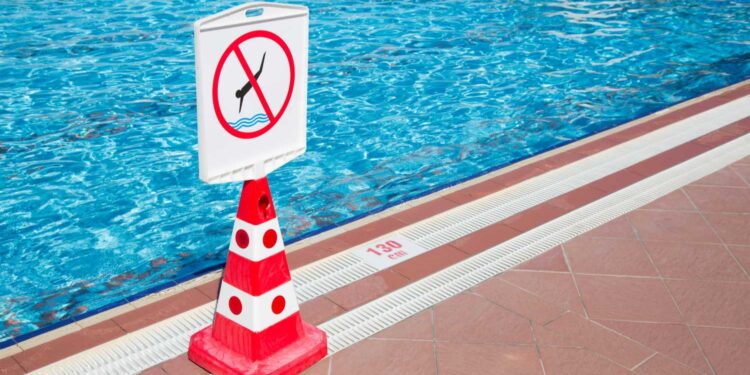When it comes to developing a plan to manage an aquatics facility, risk management is an essential component. Risk is a condition that exposes your facility to potential loss, whether from damage to property, injury to a person or even damage to your institution’s reputation.
What if you depend on revenue earned from the use of your aquatics facilities and you experience a closure because of water contamination? Or corrosion in the circulation system of your spa results in a leak that causes water damage? What if these situations could have been avoided?
Aquatics facility risk management deals with preventing injuries to patrons and staff, protecting the facility and its assets, and minimizing the exposure to legal liability. As such, you should develop a plan for protecting your facility from risk, keeping in mind some of the ways in which exposure may occur.
Negligence deals with injuries that should have been anticipated and avoided by taking reasonable precautions. When a person fails to take reasonable measures that might have prevented an otherwise avoidable accident, they may be negligent even if no harm was intended. Make sure your plan incorporates procedures that will help identify where there is potential for injury and will ensure action will be taken to address the situation before anything happens.
The public expects a certain standard of care when using an aquatics facility. This means when individuals use your pool or spa, they can reasonably expect the water is properly disinfected, the area is clear of any debris, the drain covers are in place and intact, the equipment is maintained and functioning properly, and the operators are trained and certified. Inspect your facility on a regular basis and address any issues immediately to ensure the safety of your patrons.
Duty of care is the adherence to the standard of care owed to the individuals using your facility. For example, the operator of your pool or spa has responsibilities with respect to the water and equipment being used by patrons, and that individual should have a comprehensive knowledge of the statutes, administrative codes, regulations and commonly accepted practices. Therefore, proper training and certification are important for pool and spa operators.
As you formulate your risk management plan, be sure to work with other managers, staff and patrons to establish not only the procedures you will follow, but also the levels of performance you will expect. Seek the advice of legal experts, as well as experts in the pool and spa industry, for technical assistance and their knowledge of regulatory agencies. Invest the time and resources to develop a comprehensive plan, implement it with the knowledge and cooperation of all stakeholders, train current and new staff to follow the procedures, and monitor it regularly.
Mark Milroy, CAE is the VP of Education at the Pool & Hot Tub Alliance (PHTA). Find out more at phta.org.










